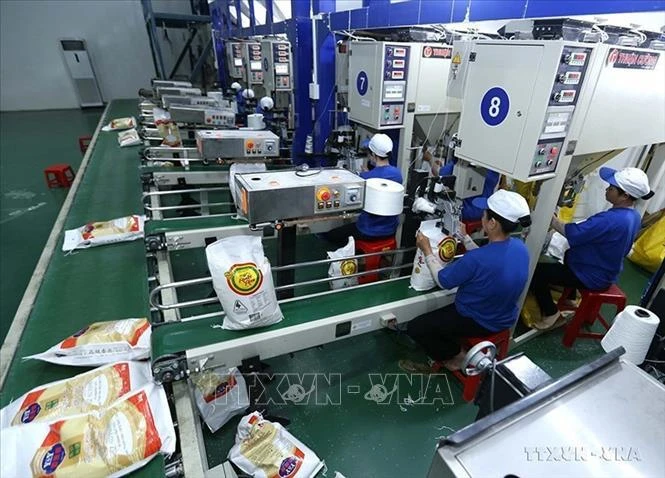
Can Tho (VNA) – Despite positive results in rice export so far, experts held that domestic firms should carefully evaluate the demand of major export markets to design suitable strategy for the rest of the year.
According to Nguyen Phuc Nam, Vice Director of the Asia-Africa Market Department under the Ministry of Industry and Trade (MoIT), Asia and Africa, which are massive markets with 117 countries and territories and a total population of 6.5 billion, accounting for 80% of the world population, have been important export markets of Vietnamese rice.
Of the 8.3 million tonnes of rice Vietnam shipped abroad in 2023, 7.34 million tonnes, or 90%, were consumed in Asia and Africa at a cost of more than 4.1 billion USD. In the first quarter of 2024, Vietnam's export of the grain to these markets continued to rise.
Nguyen Anh Son, Director of the MoIT’s Import-Export Department, cited a report by the US Department of Agriculture as saying that in the 2023-2024 crop, the global rice output is predicted to reach 515.5 million tonnes, lower than the forecast demand of 521.3 million tonnes.
This will bring more opportunities for Vietnam to export the food to Asia and Africa, especially in the context that major world rice producers and exporters have announced their plan to cut down rice export ammount due to impacts of the El Nino phenomenon.Nam advised local rice exporters to build strategies to optimise the potential in the Asian-African markets.
Meanwhile, the European-American markets, though occupying just a small proportion in Vietnam’s rice export revenue, are considered promising markets.Ta Hoang Linh, Director of the MoIT’s European-American Market Department, asserted that these areas are among the toughest and most choosy markets, especially for farm produce and food products.
Particularly, the US and the EU have applied many regulations and food safety standards, he noted, advising exporters to closely follow changes in policies and regulations of these markets.
In order to effectively exploit and expand markets for Vietnamese rice in 2024, Linh underlined the need for Vietnamese exporters to target high-end segment in Europe and America by striving to increase the added value of the product, and meeting requirements in sustainable development, income for rice farmer, environmental protection, climate change adaptation, and greenhouse emission reduction.
Meanwhile, Tran Truong Tan Tai, General Director of Vietnam Rice Company Limited, pointed to focal points for Vietnam to conquer the European market, including building Vietnamese rice trademark, sharing information on rice bidding prices abroad, training high-quality human resources for the sector, and forming material regions with steady linkage.
According to Linh, Europe and America are promising markets for Vietnamese rice in the future. Each year, the EU imports about 3-4 million tonnes of the grain, of which only 3.1% is from Vietnam.
He recommended that exporters better exploit advantages from free trade agreements with these markets, including the EU-Vietnam Free Trade Agreement (EVFTA), the UK-Vietnam Free Trade Agreement (UKFTA), and the Comprehensive and Progressive Agreement for Trans-Pacific Partnership (CPTPP), to stand out from their competitors such as those from India and Thailand.
Statistics from the European-American Market Department showed that in the first three months of 2024, Vietnam supplied 181,000 tonnes of rice to these markets for 135.9 million USD, a surge of 218.3% year on year, mostly thanks to a 492.1% rise in export to Cuba at 82.9 million USD in the period./.






















